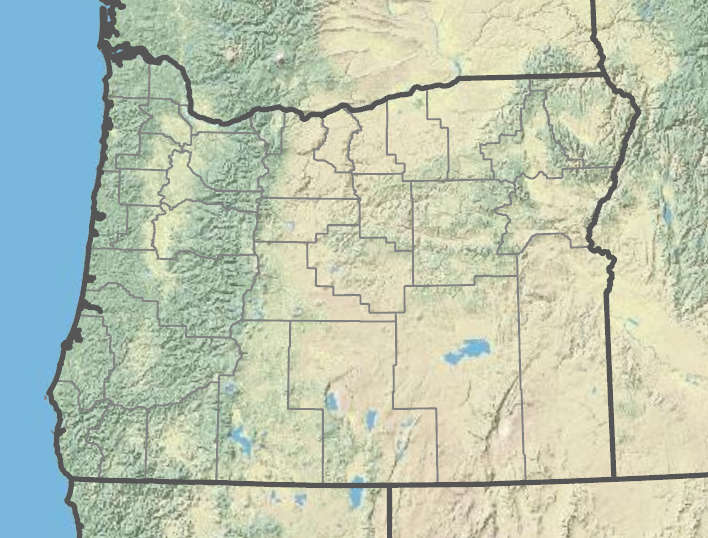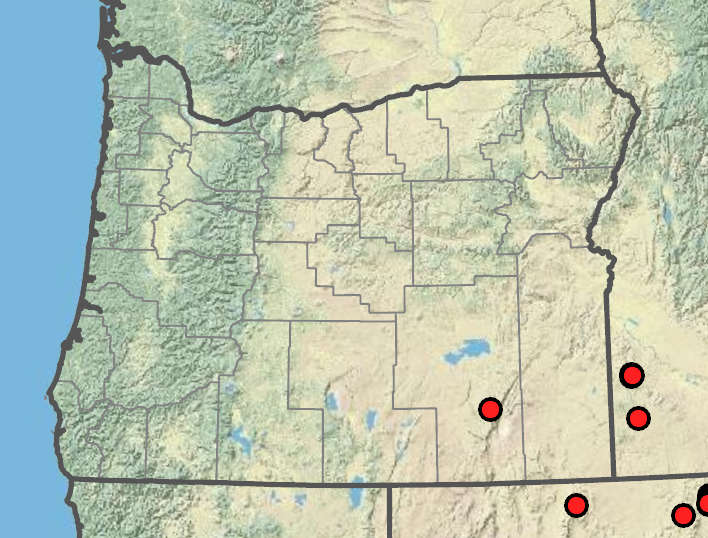|
frog rush
|
mosslike dwarf rush, moss rush
|
| Plants annual, 3–10(17)cm tall, branched. |
Plants annual, 0.3–2.5 cm tall, unbranched, stems not thickened below flowers. |
usually less than 1 mm wide; stem leaves usually 1–2. |
0.1–0.2 mm thick; basal. |
cymose; flowers solitary at nodes. |
1 terminal flower, 1–2 bractlets subtending flowers, bases not sheathing stem; tips acute to blunt. |
tepals 6, green to light brown; outer tepals usually 4–5 mm; inner more or less blunt; stamens 6; filaments 0.7– 1.5 mm; anthers 0.4–0.8 mm; styles 0.3–0.4 mm. |
tepals usually 6, brown to dark brown; shiny, incurving, usually 3(2–4) stamens; filaments 0.4–0.6 mm; anthers 0.15–0.25 mm; styles 0–0.1 mm. |
usually truncate (blunt to subacute); (shorter than) more or less equaling inner tepals, brown, 1-chambered. |
red to purple, usually shorter than the tepals. |
0.35–0.5 × 0.25–0.35 mm, apiculate. |
0.3–0.5 × 0.2–0.3 mm, not striate (at 10×). |
=34. |
|
|
|
|
|
|
|
Moist clay, stream banks, disturbed wet ground. 0–2000m. BR. CA; scattered across North America; North Africa, Eurasia. Exotic. Juncus ranarius is similar to J. bufonius, as well as Eurasian J. ambiguus, a misapplied name in our flora. The taxonomy of these species is controversial (Balslev 1996), and the complex needs worldwide revision. It is presumably exotic in North America and easily overlooked. |
Moist depressions, sagebrush flats. 2200–2300 m. BR. CA, NV, ID; southeast to CO. Native. |
Flora of Oregon, volume 1, page 283
Peter Zika |
Flora of Oregon, volume 1, page 272
Peter Zika |
J. acuminatus, J. anthelatus, J. articulatus, J. balticus, J. bolanderi, J. brevicaudatus, J. breweri, J. bryoides, J. bufonius, J. bulbosus, J. canadensis, J. capillaris, J. capitatus, J. compressus, J. confusus, J. conglomeratus, J. covillei, J. diffusissimus, J. drummondii, J. dudleyi, J. effusus, J. ensifolius, J. ensifolius x Juncus nevadensis, J. exiguus, J. falcatus, J. filiformis, J. gerardi, J. hemiendytus, J. hesperius, J. howellii, J. inflexus, J. interior, J. kelloggii, J. laccatus, J. lescurii, J. longistylis, J. marginatus, J. mertensianus, J. mexicanus, J. nevadensis, J. occidentalis, J. orthophyllus, J. oxymeris, J. parryi, J. patens, J. pelocarpus, J. planifolius, J. regelii, J. saximontanus, J. supiniformis, J. tenuis, J. tiehmii, J. torreyi, J. triglumis, J. trilocularis, J. uncialis |
J. acuminatus, J. anthelatus, J. articulatus, J. balticus, J. bolanderi, J. brevicaudatus, J. breweri, J. bufonius, J. bulbosus, J. canadensis, J. capillaris, J. capitatus, J. compressus, J. confusus, J. conglomeratus, J. covillei, J. diffusissimus, J. drummondii, J. dudleyi, J. effusus, J. ensifolius, J. ensifolius x Juncus nevadensis, J. exiguus, J. falcatus, J. filiformis, J. gerardi, J. hemiendytus, J. hesperius, J. howellii, J. inflexus, J. interior, J. kelloggii, J. laccatus, J. lescurii, J. longistylis, J. marginatus, J. mertensianus, J. mexicanus, J. nevadensis, J. occidentalis, J. orthophyllus, J. oxymeris, J. parryi, J. patens, J. pelocarpus, J. planifolius, J. ranarius, J. regelii, J. saximontanus, J. supiniformis, J. tenuis, J. tiehmii, J. torreyi, J. triglumis, J. trilocularis, J. uncialis |
| Juncus ambiguus, Juncus bufonius var. halophilus |
|
| |

